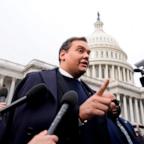The New NASCAR: More Accidents, Fewer Injuries?
NASCAR president: 'If you ain't rubbing, you ain't racing.'
Feb. 6, 2010— -- Racing down the track at speeds approaching 200 mph, practically skidding around dangerous turns, tires screeching on the asphalt -- it's traditional NASCAR stock car racing. But starting this season, the sport is getting a boost and -- officials hope -- speeding back into many long-time fans' hearts.
With Speedweek right around the corner and the Daytona 500 coming up Feb. 14, NASCAR officials and fans alike are anxious to see if changes announced in January for the 2010 season will be enough to kick the sport back into overdrive.
"If you ain't rubbing, you ain't racing," NASCAR president Mike Helton told reporters last month in announcing one of the biggest changes: getting rid of bump-drafting rules at the super speedways. The change will allow drivers to touch the rear bumper of a car it is drafting without an automatic penalty. The practice was restricted after seven-time series champion Dale Earnhardt was killed in 2001 after another car bumped his left rear fender, ultimately sending Earnhardt's car into a wall.
NASCAR is also reintroducing a larger restrictor plate at certain races, including the upcoming Daytona 500, to give the cars more horsepower. And for NASCAR's Sprint Cup series, the current aerodynamic wings on the rear of the cars will be replaced gradually with a lower profile spoiler to give the car a more conventional NASCAR look.
NASCAR fans have missed the competition and rivalry between the drivers. Bump-drafting – one car lined up behind another to reduce drag with a little bump from the rear car to push the lead one ahead -- allowed drivers to pick up more speed. It's a technique that became a crucial part of racing at Talladega and Daytona Super Speedways. But when performed incorrectly or too aggressively, bump-drafting could end in a crash, so as a result, it was banned.
Over the course of the last several years, safety has been "increased, we have safer barriers, we have an overall safer car," said Ramsey Poston, a NASCAR spokesman. Now, with the new rules, drivers are "going to have a lot more leeway on the track to race the cars. They'll be able to be more aggressive, and that's a result of the safety efforts we've implemented over the last few years."






